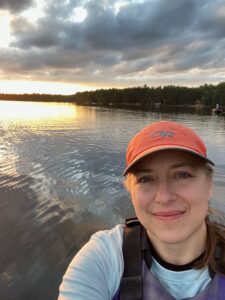hide
<>Meet Dr Jennifer (Jen) Granick, newly appointed Co-chair of the Therapeutics Guidelines Group (TGG)
h3
hide
Could you introduce yourself and your new role to our members?
I’m an Associate Professor of small animal internal medicine at the University of Minnesota College of Veterinary Medicine in the USA and I’m excited to be taking up this new role with the TGG.
Could you summarize your career to date?
I received my DVM from the University of Wisconsin-Madison before completing a rotating internship, a small animal internal medicine residency and concurrent Master’s degree at the University of Minnesota College of Veterinary Medicine. I then received a PhD in comparative pathology at the University of California, Davis. I came back to the University of Minnesota as faculty in the Veterinary Clinical Sciences department and have been there ever since. At the University of Minnesota Veterinary Medical , I chair the antimicrobial stewardship committee; I am a member of the Minnesota One Health Antibiotic Stewardship Collaborative, Co-direct the University of Minnesota Antimicrobial Resistance and Stewardship Initiative, and serve on the American Veterinary Medical Association’s Committee on Antimicrobials group. My research focuses on antimicrobial use in companion animals.
completing a rotating internship, a small animal internal medicine residency and concurrent Master’s degree at the University of Minnesota College of Veterinary Medicine. I then received a PhD in comparative pathology at the University of California, Davis. I came back to the University of Minnesota as faculty in the Veterinary Clinical Sciences department and have been there ever since. At the University of Minnesota Veterinary Medical , I chair the antimicrobial stewardship committee; I am a member of the Minnesota One Health Antibiotic Stewardship Collaborative, Co-direct the University of Minnesota Antimicrobial Resistance and Stewardship Initiative, and serve on the American Veterinary Medical Association’s Committee on Antimicrobials group. My research focuses on antimicrobial use in companion animals.
What attracted you to getting involved with the WSAVA?
I saw the advertisement for a position on the Therapeutic Guidelines Group in an email from the American Veterinary Medical Association’s Committee on Antimicrobials group. When I saw that the TGG was looking for a small animal internist with expertise in antimicrobial stewardship, I thought ‘that’s me!’ and I was really keen to start making a contribution in this area from a global perspective.
Antimicrobial Resistance (AMR) is a particular focus for the TGG. What spurred your interest in this area?
Since vet school, I have always had a particular interest in infectious disease, especially zoonotic diseases. I studied the local host response to MRSA in skin wounds for my PhD. And as a clinician, I saw multi-drug resistant infections in my patients go from a rare event to becoming something we saw daily. Soon after I took up my faculty position, my colleague and mentor Dr Jeff Bender asked for my help to start an antimicrobial stewardship committee at our teaching hospital. It has been a passion project for me ever since.
If our members could do one thing to support the effective stewardship of antimicrobials, what would it be?
Only one thing?! I can’t decide, so I will offer two.
First, think critically about duration of treatment, since antimicrobial pressure is a driver of antimicrobial resistance. When I went to vet school, I learned to treat infections with courses of antibiotics that are way longer than the ones I use now. In most cases, treating to clinical resolution is enough (for example, 3 days for most lower urinary tract infections should do it).
Second, consider the idea of watchful waiting. There are conditions in which animals will get better on their own without therapy, especially those caused by viruses (such as upper respiratory tract infections). A little time and supportive care may be all the dog or cat needs.
There are great published antimicrobial use guidelines out there (and more coming) that provide useful information on the TGG page of the WSAVA website.
What do you enjoy doing outside work?
Outside of work, my family keeps me busy (two kids, two dogs, two cats, and my husband). When not running around to support their activities, I love to camp, kayak, canoe, paddleboard, and go to the opera! I also am an avid reader and baker.
hide
hide

